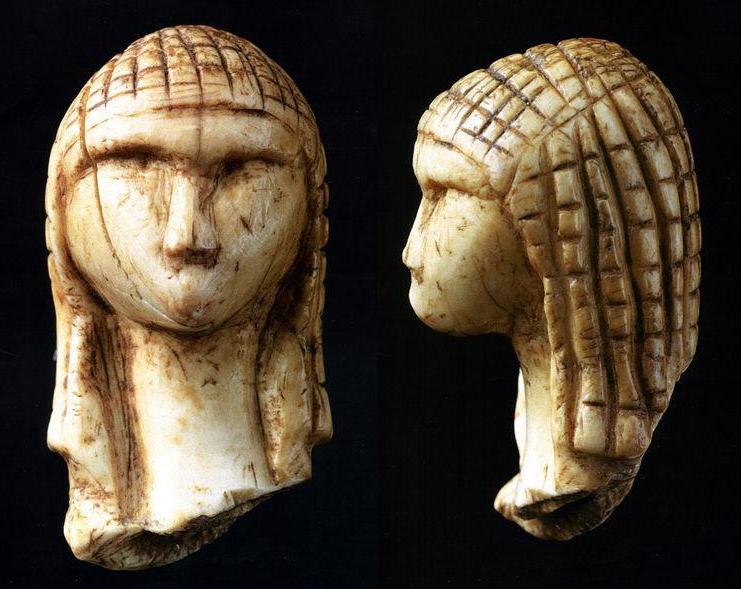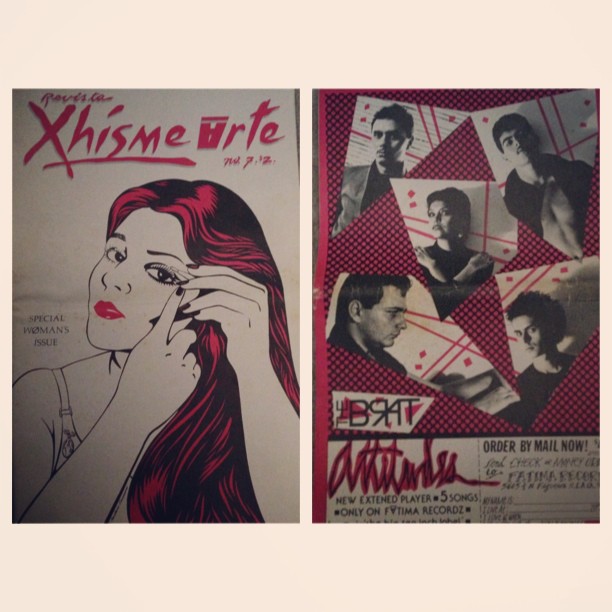|
Centro De Arte Público
Centro de Arte Público was an American arts organization and collective founded in 1977 and closed in 1979 in Highland Park neighborhood in Los Angeles, California, U.S.. The former building was declared a Los Angeles Historic-Cultural Monument (#1233) on August 24, 2021. History It was founded by Carlos Almaraz of Los Four, Guillermo Bejarano, and Richard Duardo. Almaraz and Bejarano were painters, and Duardo had worked as a printmaker at Self Help Graphics; all three had a connect to the neighborhood. Some sources also named Leo Limón as a forth founder. The organization focused on the creation of artwork centered on the theme of Los Angeles street scenes and work by Chicano/Chicana youth. They fused Chicano consciousness, communist teachings, and a silkscreen printing business. In the 1970s, Dolores Guerrero-Cruz, Barbara Carrasco, and Judithe Hernández actively had been part of Centro de Arte Público. The Centro de Arte Público is one of three local arts organi ... [...More Info...] [...Related Items...] OR: [Wikipedia] [Google] [Baidu] |
Carlos Almaraz
Carlos D. Almaraz (October 5, 1941 – December 11, 1989) was a Mexican-American artist and a pioneer of the Chicano art movement. He was one of the founder of the Centro de Arte Público (1977–1979), a Chicano/Chicana arts organization in Highland Park, Los Angeles. Early life and education Almaraz was born on October 5, 1941, in Mexico City, Mexico to parents Roe and Rudolph Almaraz. His family moved when he was a young child, settling in Chicago, Illinois, where his father owned a restaurant for five years and worked in Gary steel mills for another four. The neighborhood Almaraz and his brothers Rudolph Jr. and Ricky were raised in was multicultural, which led him to appreciate the melting pot of American culture. During his youth in Chicago, the family traveled to Mexico City frequently, where Almaraz reports having his "first impression of art" that "was both horrifying and absolutely magical", in other words "Sublime". When Almaraz was age nine, his family moved to Lo ... [...More Info...] [...Related Items...] OR: [Wikipedia] [Google] [Baidu] |
Judithe Hernández
Judithe Hernández (born 1948) is a Mexican-American artist and educator, she is known as a muralist, pastel artist, and painter. She is a pioneer of the Chicano art movement and a former member of the art collective Los Four. She is based in Los Angeles, California and previously lived in Chicago. She first received acclaim in the 1970s as a muralist her artistic practice shifted over time and now is centered on works-on-paper, principally pastels, which frequently incorporate indigenist imagery and the social-political tension of gender roles. In 1974, she became the fifth member, and only woman, in Los Four, the influential and celebrated East Los Angeles (region), East Los Angeles Chicano artist collective, along with Carlos Almaraz, Frank Romero, Robert de la Rocha, and Gilbert Luján. And she was later briefly part of the art collective, Centro de Arte Público along with Barbara Carrasco and Dolores Guerrero-Cruz. As early as 1970, Hernández was involved in the initia ... [...More Info...] [...Related Items...] OR: [Wikipedia] [Google] [Baidu] |
Arts Organizations Based In Los Angeles
The arts or creative arts are a vast range of human practices involving creative expression, storytelling, and cultural participation. The arts encompass diverse and plural modes of thought, deeds, and existence in an extensive range of media. Both a dynamic and characteristically constant feature of human life, the arts have developed into increasingly stylized and intricate forms. This is achieved through sustained and deliberate study, training, or theorizing within a particular tradition, generations, and even between civilizations. The arts are a medium through which humans cultivate distinct social, cultural, and individual identities while transmitting values, impressions, judgments, ideas, visions, spiritual meanings, patterns of life, and experiences across time and space. The arts are divided into three main branches. Examples of visual arts include architecture, ceramic art, drawing, filmmaking, painting, photography, and sculpture. Examples of literature include ... [...More Info...] [...Related Items...] OR: [Wikipedia] [Google] [Baidu] |
American Artist Groups And Collectives
American(s) may refer to: * American, something of, from, or related to the United States of America, commonly known as the "United States" or "America" ** Americans, citizens and nationals of the United States of America ** American ancestry, people who self-identify their ancestry as "American" ** American English, the set of varieties of the English language native to the United States ** Native Americans in the United States, indigenous peoples of the United States * American, something of, from, or related to the Americas, also known as "America" ** Indigenous peoples of the Americas * American (word), for analysis and history of the meanings in various contexts Organizations * American Airlines, U.S.-based airline headquartered in Fort Worth, Texas * American Athletic Conference, an American college athletic conference * American Recordings (record label), a record label that was previously known as Def American * American University, in Washington, D.C. Sports teams ... [...More Info...] [...Related Items...] OR: [Wikipedia] [Google] [Baidu] |
Mexican-American Culture In Los Angeles
Mexican Americans are Americans of full or partial Mexico, Mexican descent. In 2022, Mexican Americans comprised 11.2% of the US population and 58.9% of all Hispanic and Latino Americans. In 2019, 71% of Mexican Americans were born in the United States. Mexicans born outside the US make up 53% of the total population of foreign-born Hispanic Americans and 25% of the total foreign-born population. Chicano is a term used by some to describe the unique identity held by Mexican-Americans. The United States is home to the second-largest Mexicans, Mexican community in the world (24% of the entire emigration from Mexico, Mexican-origin population of the world), behind only Mexico. Most Mexican Americans reside in Southwestern United States, the Southwest, with more than 60% of Mexican Americans living in the states of California and Texas. They have varying degrees of Indigenous peoples of Mexico, indigenous and White Mexicans, European ancestry, with the latter being of mostly Spanis ... [...More Info...] [...Related Items...] OR: [Wikipedia] [Google] [Baidu] |
Artist-run Centres
Canadian artist-run centres (ARC or ARCs) are galleries and art spaces developed by artists in Canada since the 1960s. The artist-run centre is the common term of use for artist-initiated and managed organizations in Canada. Most centres follow the not-for-profit arts organization model, do not charge admission fees, pay artists for their contributions (exhibitions, presentations, performances) are non-commercial and de-emphasize the selling of artwork. Origins The centres were created originally in response to a lack of opportunity to present contemporary work, especially in the 1960s and 1970s experimental art practices such as performance, installation, conceptual art and video in Canada and with the desire to network with other artists nationally and internationally. The early artist-run centres in Canada were critical of the commodification of traditional art forms exhibited in mainstream galleries and institutions which did not show emerging and experimental works, interdiscip ... [...More Info...] [...Related Items...] OR: [Wikipedia] [Google] [Baidu] |
List Of Los Angeles Historic-Cultural Monuments On The East And Northeast Sides
This is a list of Los Angeles Historic-Cultural Monuments on the East and Northeast Sides of the city of Los Angeles, California, in the United States. There are more than 140 Los Angeles Historic-Cultural Monuments (LAHCM) in this area. It includes the communities of Boyle Heights, Los Angeles, Boyle Heights, Highland Park, Los Angeles, Highland Park, Eagle Rock, Los Angeles, Eagle Rock, Lincoln Heights, Los Angeles, Lincoln Heights, Mt. Washington, Los Angeles, Mt. Washington, Hermon, Los Angeles, Hermon, Garvanza, Los Angeles, Garvanza and Montecito Heights, Los Angeles, Montecito Heights. They are designated by the City's Cultural Heritage Commission. Current and former Historic-Cultural Monuments Non-HCM historic sites recognized by state and nation See also * Bibliography of Los Angeles * Outline of the history of Los Angeles * Bibliography of California history Lists of L.A. Historic-Cultural Monuments * List of Los Angeles Historic-Cultural Monuments in Downtown L ... [...More Info...] [...Related Items...] OR: [Wikipedia] [Google] [Baidu] |
Chicano Art Movement
The Chicano Art Movement represents groundbreaking movements by Mexican-American artists to establish a unique artistic identity in the United States. Much of the art and the artists creating Chicano Art were heavily influenced by Chicano Movement (El Movimiento) which began in the 1960s. Chicano art was influenced by post-Mexican Revolution ideologies, Pre-Columbian art, pre-Columbian art, European painting techniques and Mexican-American social, political and cultural issues. The movement worked to resist and challenge dominant social norms and stereotypes for cultural autonomy and self-determination. Some issues the movement focused on were awareness of collective history and culture, restoration of land grants, and equal opportunity for social mobility. Women used ideologies from the feminist movement to highlight the struggles of women within the Chicano art movement. Throughout the movement and beyond, Chicanos have used art to express their cultural values, as protest or for ... [...More Info...] [...Related Items...] OR: [Wikipedia] [Google] [Baidu] |
Barbara Carrasco
Barbara Carrasco (born 1955) is a Chicana artist, activist, painter and muralist. She lives and works in Los Angeles. Her work critiques dominant cultural stereotypes involving socioeconomics, race, gender and sexuality, and she is considered to be a radical feminist. Her art has been exhibited nationally and internationally. Her work was exhibited in the 1990-1993 traveling exhibition Chicano Art: Resistance and Affirmation. In 2024, Carrasco's work was included in ''Xican-a.o.x. Body,'' an expansive group exhibition on the experiences and contributions by Chicano artists in contemporary culture. The show gathered artworks from the 1960s to the present and it was first in view at the Cheech Marin Center for Chicano Art & Culture of the Riverside Art Museum, California, and later traveled to the Pérez Art Museum Miami, Florida. Biography Carrasco was born in El Paso, Texas to Mexican-American parents. She was the oldest girl and second oldest child of four siblings. When ... [...More Info...] [...Related Items...] OR: [Wikipedia] [Google] [Baidu] |
Richard Duardo
Richard Saul Duardo (1952 – 2014) was an American master printmaker, visual artist, and illustrator, of Mexican descent. He was known for screen printing, and was an important person within the Chicano art community in Los Angeles, California. His work is in the collection of The Cheech Marin Center for Chicano Art & Culture, the University of California, Santa Barbara, and the Los Angeles County Museum of Art. Early life and education Richard Duardo was born May 15, 1952, in Los Angeles, California. He was raised in the Boyle Heights neighborhood of Los Angeles. Durado graduated from Franklin High School in Highland Park. Duardo studied printmaking at Pasadena City College, and the University of California, Los Angeles (UCLA). He graduated from UCLA with a bachelor's degree in graphic design 1976. He apprenticed under master printer Jeff Wasserman in 1977. Career Duardo co-founded arts organization, Centro De Arte Publico, with artists Carlos Almaraz and Guillermo B ... [...More Info...] [...Related Items...] OR: [Wikipedia] [Google] [Baidu] |
Dolores Guerrero-Cruz
Dolores Guerrero-Cruz (born 1948) is an American artist, she is known for her contemporary art through paintings, murals, and graphic art. Her art reflects her advocacy towards the feminist movement and empowerment movement for the Chicano and Latin community. Guerrero-Cruz now resides in East Los Angeles. Early life and education Dolores Guerrero-Cruz was born in Rocky Ford, Colorado in the year 1948, she is of Mexican-American heritage. As a result of her mother's passing, her grandmother became the guardian of her siblings and her. Her family later moved to California. Dolores Guerrero-Cruz studied art at California State University, Los Angeles, continued at University of California, Davis, and later transferred to University of California, Los Angeles. She had additional education at Otis College of Art and Design (formally known as Otis Art Institute of Parsons School of Design. Career Guerrero-Cruz has been an advocate for Chicano social justice and feminism. In t ... [...More Info...] [...Related Items...] OR: [Wikipedia] [Google] [Baidu] |


